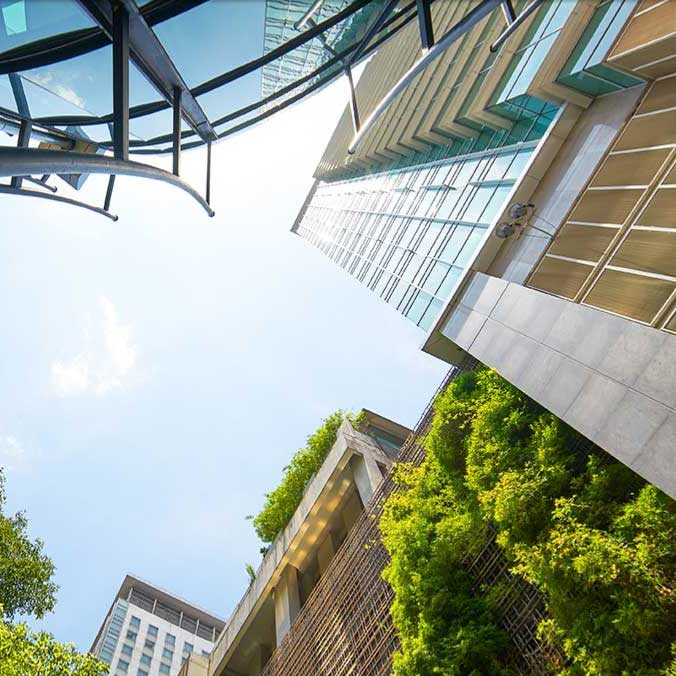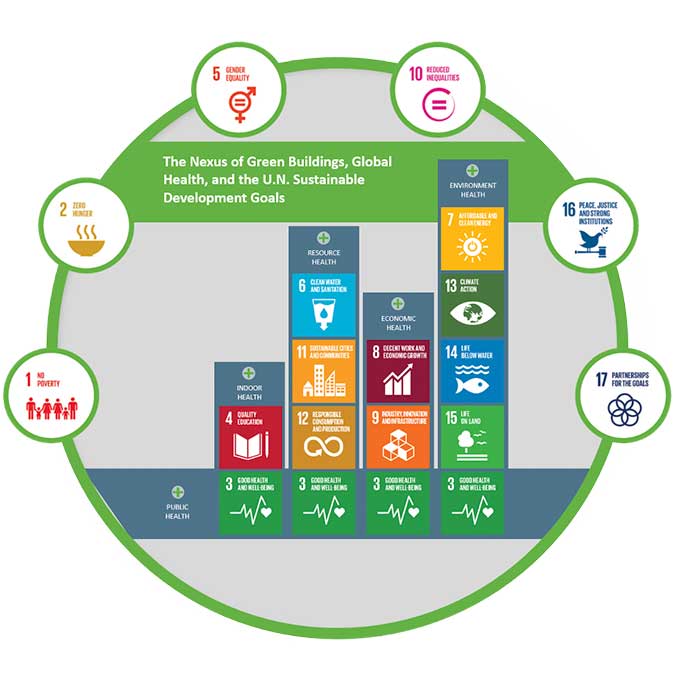The Impact of Healthy Buildings
With humans spending 90 percent of our time indoors, our individual health is directly tied to the health of our buildings. But that’s just for starters. Healthy Buildings are at the nexus of global health and sustainable development goals, operating across four pillars of health – Indoor Health, Resource Health, Economic Health, Environmental Health – and under-pinned by Public Health.

Indoor Health
The World Health Organization estimates that 25% of all diseases globally are attributable to the environment, resulting in more than 12 million deaths annually. Reducing the number of deaths and illnesses from hazardous chemicals and air, water and soil pollution and contamination begins with reducing daily adverse exposures to these hazards. Nowhere is this more important than inside the four walls of the building for the simple reason that this is where we spend most our time. Currently, the average lifespan across the developed world is about 70 years. By the time we reach this age, over 60 years of our life will be spent indoors.
Resource Health
Buildings are the largest, most resource intensive product on the planet, and as such the construction of new buildings come at the expense of our natural systems. The land needed for our cities, the materials and water needed for our buildings, and the waste generated by our buildings are putting a strain on global resource health. Green building strategies, net-zero approaches, and green chemistry principles hold promise to minimize the adverse impact of buildings on our natural systems and resources.


Economic Health
Green building principles and ideologies minimize environmental impact, support construction jobs, higher property values and conditions for higher worker productivity. For owners and developers, green buildings result in 3% higher rent premiums and 7% higher cash flow as well as higher occupancy rates and transactional prices. For tenants, employees in green buildings regularly report greater indoor air quality and fewer “‘”sick building symptoms” in green buildings.
Environmental Health
Buildings are responsible for 30% of global greenhouse gas emissions that warm the planet. One of the biggest opportunities to improve environmental health needs to come from the building sector. Energy use intensity of green buildings is typically 20-40% lower than a typically constructed building. In addition, the energy that green buildings save come with a health co-benefit. Reducing energy consumption results in fewer health harmful air pollutants emitted to the atmosphere.


Building For Health
Although the challenges related to rapid urbanization, natural resource constraints and climate change are daunting, they also provide an opportunity to mobilize solutions on a global scale. We now recognize the central role that buildings will play in advancing health globally. Currently, 75% of the infrastructure needed by 2050 has not yet been built.
This presents the potential for one of the greatest public health interventions ever. Green Buildings and their Building for Health principles – Indoor, Resource, Economic and Environmental Health – will be part of the solution. As these concepts expand around the world, the concept of sustainable urbanization also needs to be a conversation that empowers all. Creating more equitable access to green building values, healthy buildings, and sustainable development is a global imperative.
Learn More About Sustainable Design Goals at sdgs.forhealth.org


